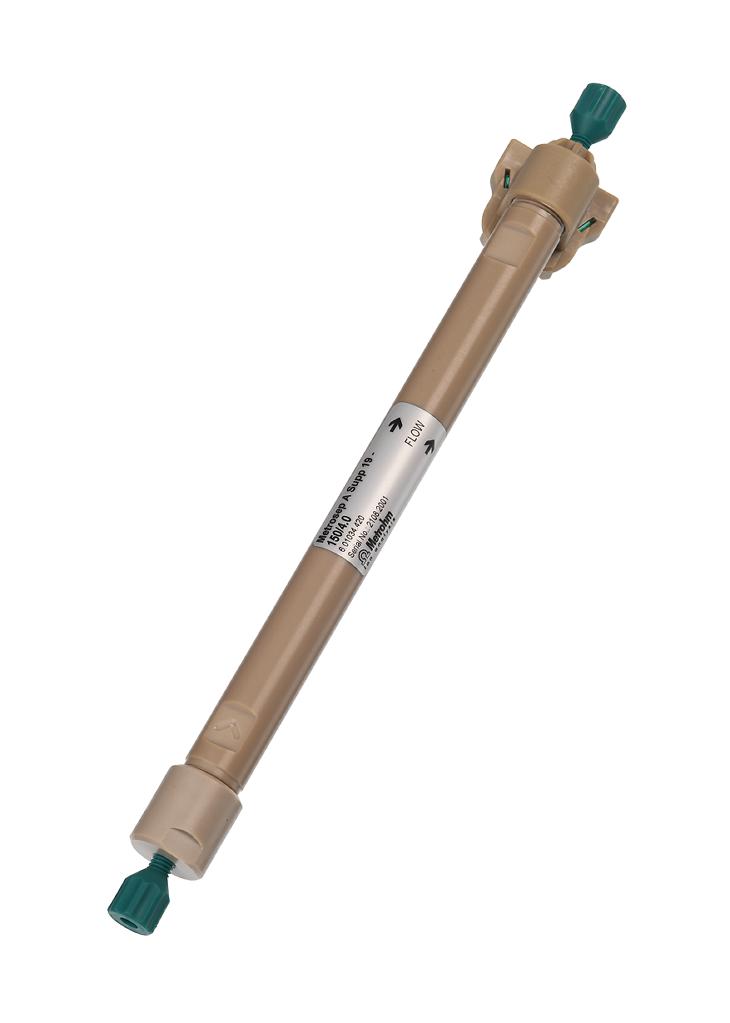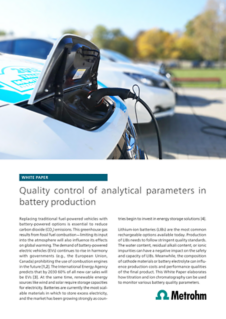[1] Outlook for battery and energy demand – Global EV Outlook 2024 – Analysis. IEA. https://www.iea.org/reports/global-ev-outlook-2024/outlook-for-battery-and-energy-demand (accessed 2024-07-18).
[2] Heimes, H.; Kampker, A.; Hemdt, A.; et al. Manufacturing of Lithium-Ion Battery Cell Components; 2019.
[3] Bogossian, J. Hard Rock Lithium Deposits | Geology for Investors. https://www.geologyforinvestors.com/hard-rock-lithium-deposits/ (accessed 2024-07-11).
[4] International Organization for Standardization. ISO/WD 10662 - Determination of main content of lithium carbonate - Potentiometric titration. https://www.iso.org/standard/83740.html (accessed 2024-07-11).
[5] International Organization for Standardization. ISO/AWI 11045-1 - Methods for chemical analysis of lithium salts — Part 1: Quantitative determination of lithium hydroxide and lithium carbonate content in lithium hydroxide monohydrate — Potentiometric titration method. https://www.iso.org/standard/83764.html (accessed 2024-07-11).
[6] Meier, L. Quality Control of Analytical Parameters in Battery Production, 2022.
[7] Li, Z.; Mercken, J.; Li, X.; et al. Efficient and Sustainable Removal of Magnesium from Brines for Lithium/Magnesium Separation Using Binary Extractants. ACS Sustainable Chem. Eng. 2019, 7 (23), 19225–19234. DOI:10.1021/acssuschemeng.9b05436
[8] Lalasari, L. H.; Fatahillah, F. R.; Rahmat, D. R. G.; et al. Magnesium Removal from Brine Water with Low Lithium Grade Using Limestone, Rembang, Indonesia. IOP Conf. Ser.: Mater. Sci. Eng. 2019, 578 (1), 012067. DOI:10.1088/1757-899X/578/1/012067
[9] Lithium-Ion Batteries: Basics and Applications, 1st ed. 2018.; Korthauer, R., Ed.; Springer Berlin Heidelberg : Imprint: Springer: Berlin, Heidelberg, 2018. DOI:10.1007/978-3-662-53071-9
[10] Schuer, A. R.; Kuenzel, M.; Yang, S.; et al. Diagnosis Tools for Humidity-Born Surface Contaminants on Li[Ni0.8Mn0.1Co0.1]O2 Cathode Materials for Lithium Batteries. Journal of Power Sources 2022, 525, 231111. DOI:10.1016/j.jpowsour.2022.231111
[11] Bresser, D.; Buchholz, D.; Moretti, A.; et al. Alternative Binders for Sustainable Electrochemical Energy Storage – the Transition to Aqueous Electrode Processing and Bio-Derived Polymers. Energy Environ. Sci. 2018, 11 (11), 3096–3127. DOI:10.1039/C8EE00640G
[12] Kosfeld, M.; Westphal, B.; Kwade, A. Correct Water Content Measuring of Lithium-Ion Battery Components and the Impact of Calendering via Karl-Fischer Titration. Journal of Energy Storage 2022, 51, 104398. DOI:10.1016/j.est.2022.104398
[13] Kosfeld, M.; Westphal, B.; Kwade, A. Moisture Behavior of Lithium-Ion Battery Components along the Production Process. Journal of Energy Storage 2023, 57, 106174. DOI:10.1016/j.est.2022.106174
[14] IEA. Batteries and Secure Energy Transitions; IEA: Paris, 2024.
[15] Kuzuhara, S.; Yamada, Y.; Igarashi, A.; et al. Fluorine Fixation for Spent Lithium-Ion Batteries toward Closed-Loop Lithium Recycling. J Mater Cycles Waste Manag 2024. DOI:10.1007/s10163-024-01991-x
 分享文章
分享文章
![Results of the automated lithium hydroxide assay (0.1227 g for each titration) for six samples. The uncovered samples exhibit increased carbonate content over time because of carbon dioxide uptake from the air, while covered samples remain stable [6]. Results of the automated lithium hydroxide assay (0.1227 g for each titration) for six samples. The uncovered samples exhibit increased carbonate content over time because of carbon dioxide uptake from the air, while covered samples remain stable.](https://metrohm.scene7.com/is/image/metrohm/Lithium-hydroxide-and-carbonate-content-over-time-covered-vs-uncovered?qlt=85&wid=1600&ts=1725862139695&dpr=off)






















